Want More Distance? Then Don’t Cast To The Fish!
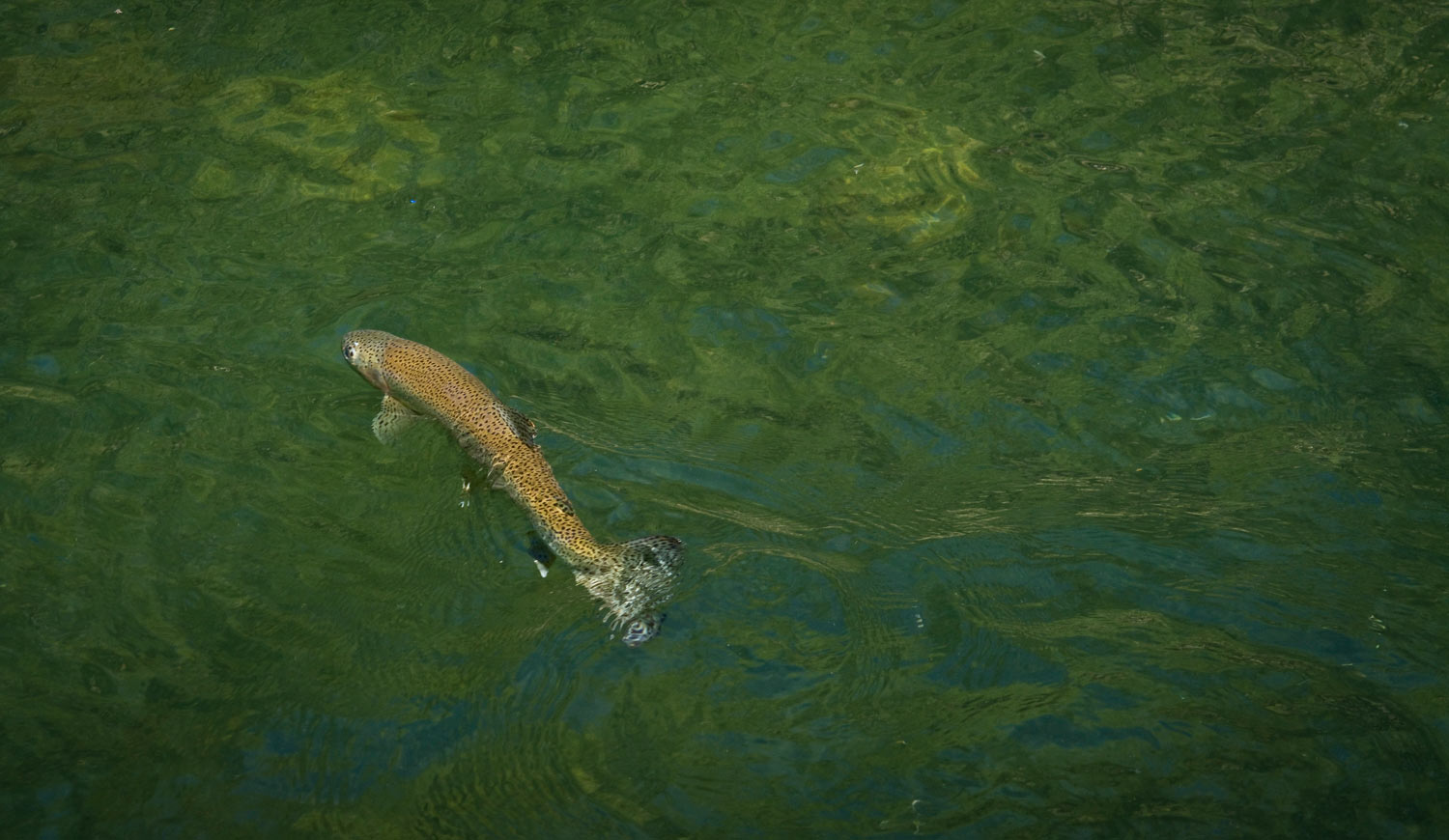
By Kyle Wilkinson
Our shop offers free casting lessons once a month at a local park in town. These events are always a great way to interact with existing customers, attract new ones, and simply enjoy being outside in the great state of Colorado.
We had our first one of these events earlier this week and I had the opportunity to work with anglers of a variety of skill levels. We had a great time and I’ll never tire of seeing the excitement on an angler’s face when he sees his casts looking better than ever. Being able to help them connect the dots on what they’re doing wrong and why is always extremely rewarding.
That said, regardless of the angler’s skill level, one common mistake continued to be made by nearly everyone from the complete novice to the more advanced casters. I recently wrote about “My Number One Casting Tip” on this site a few weeks back. And while that is still a very valuable lesson (that we definitely implemented that night), here is another big mistake I continually see anglers make. The good news is, this is extremely simple to adjust and I’m confident it will make you a better caster.
Casting TO The Fish: The fish are in the water. I get that. I also get that we need our flies to get to the fish in order to catch them. Where this casting flaw comes into play then is when an angler makes two or three perfect false casts with loops so tight you could barely squeeze a toothpick through them and then when it’s time to set the cast down- BAM- the rod trip drops on the forward cast to point right at the target, the loop opens up so big you could drive a car through it, and all the power of the cast is lost. Oftentimes it may not even totally lie out or turn over the fly. Another quick way to tell if you’re dropping the rod tip a little too quickly is if the fly line is hitting the water (or grass in our situation) before the fly. It may even look like the fly line is “rolling out” on the surface of the water towards your intended target. If you’ve ever experienced the feeling of “why did my false casts feel so good and then my final cast had no power when I went to set it down?” this is likely the reason.
So, now on to the part of how to fix this casting flaw.
Read More »Fly Fishing: Respect Thy Tarpon Guide
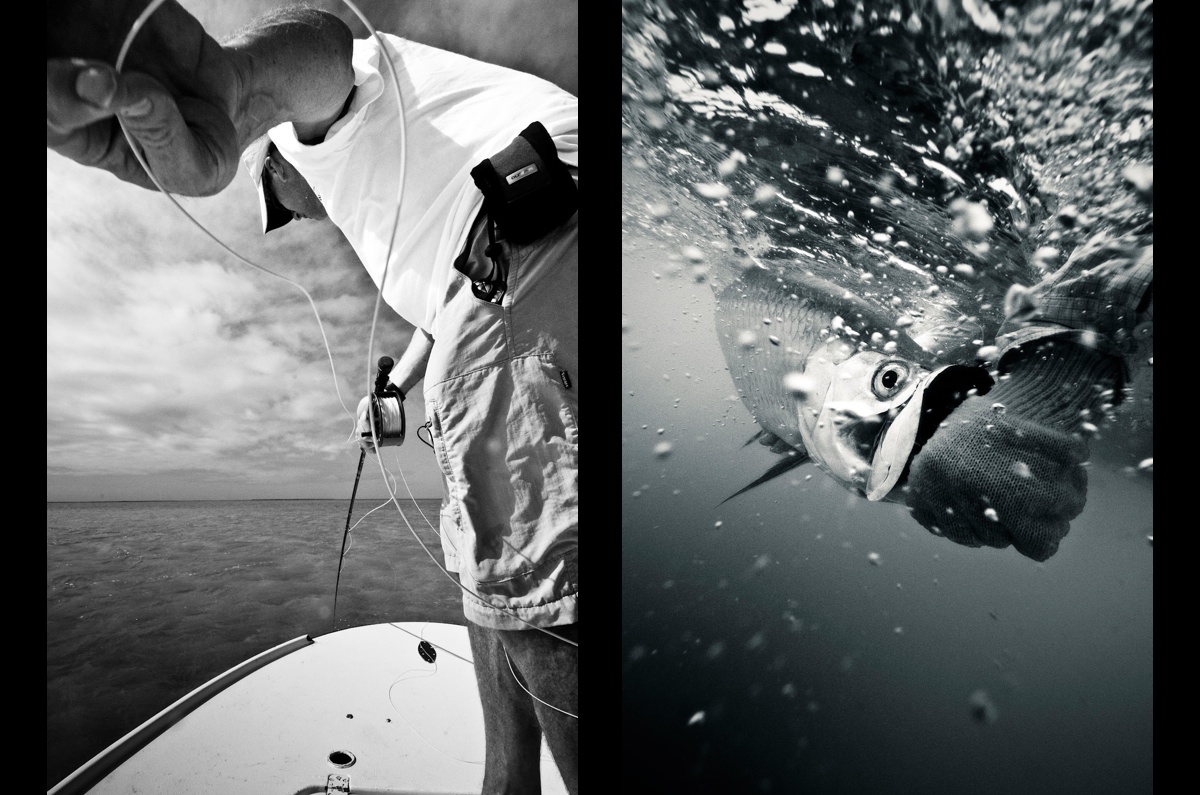
I respect tarpon guides a great deal. As a trout guide, I run into many of the same struggles they do on the water, but tarpon guides have to deal with managing them at the extreme level. They spend their days on the water guiding in some of the most demanding and technical fly fishing conditions on the planet, and to make things worse, many of their clients have never experienced the saltwater fishing conditions before in their life. Getting the job done, day in and day out, is rarely easy for a tarpon guide. I imagine there’s plenty of silent prayers being made on those poling platforms, begging for a starving fish to show itself at just the right angle, and that a good presentation follows.
Friends that guide for tarpon tell me of occasional periods where the skunk doesn’t leave the boat for days at a time. Hookups that are short lived, are the only thing that keep them sane and focused on the prize. It’s not that they aren’t spotting fish and getting plenty of opportunities during the day. Most of the time, their hands are clean and the skunk falls on the operators standing on the bow. It’s hard to hit your targets if you haven’t taken the time to sight-in your fly rod before you begin the hunt (pre-trip casting preparation). Consequently, a large percentage of the fish catching opportunities witnessed by tarpon guides fizzle out before they can materialize, from presentations missing their intended targets. And don’t get me started on the unstable emotions that plague newcomers to chasing tarpon on the fly. That’s a whole-nother can of worms. I’ve been on the bow many times, where I completely fell apart after locking eyes with a 100+ pound poon.
Read More »The Simms Freestone Backpack: Review
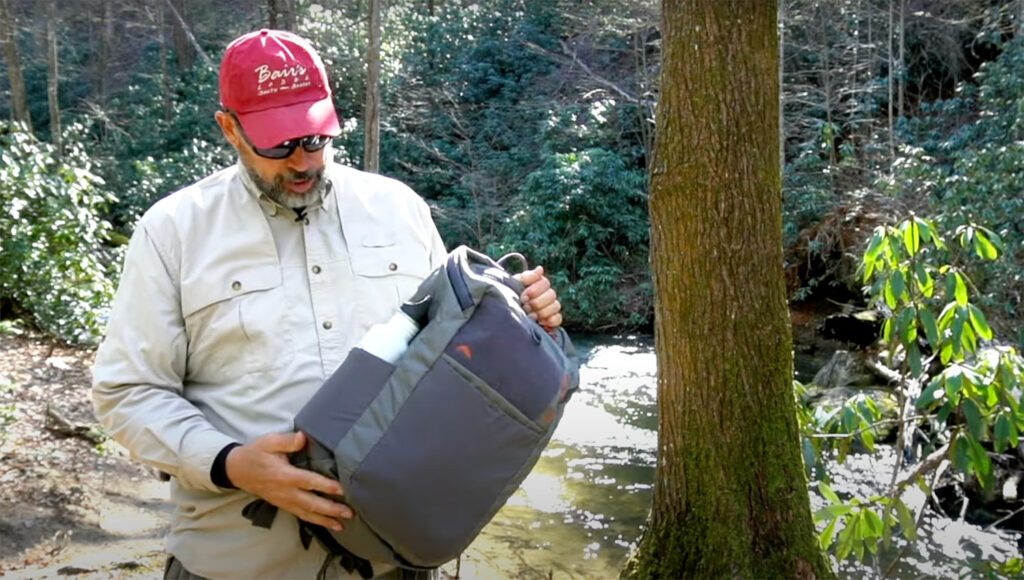
By Louis Cahill Looking for a great fly fishing backpack? The Simms Freestone Backpack is a great choice. Light weight but durable, easy to carry and really versatile this pack is perfect for hike in fishing and even a light overnight. Loaded with features and designed for either fishing or hiking, at $159 the Freestone Backpack delivers a lot of value. watch this video review for all the details on the Simms Freestone Backpack! Gink & Gasoline www.ginkandgasoline.com hookups@ginkandgasoline.com Sign Up For Our Weekly Newsletter!
Read More »Fly Fishing Stillwater by Gareth Jones
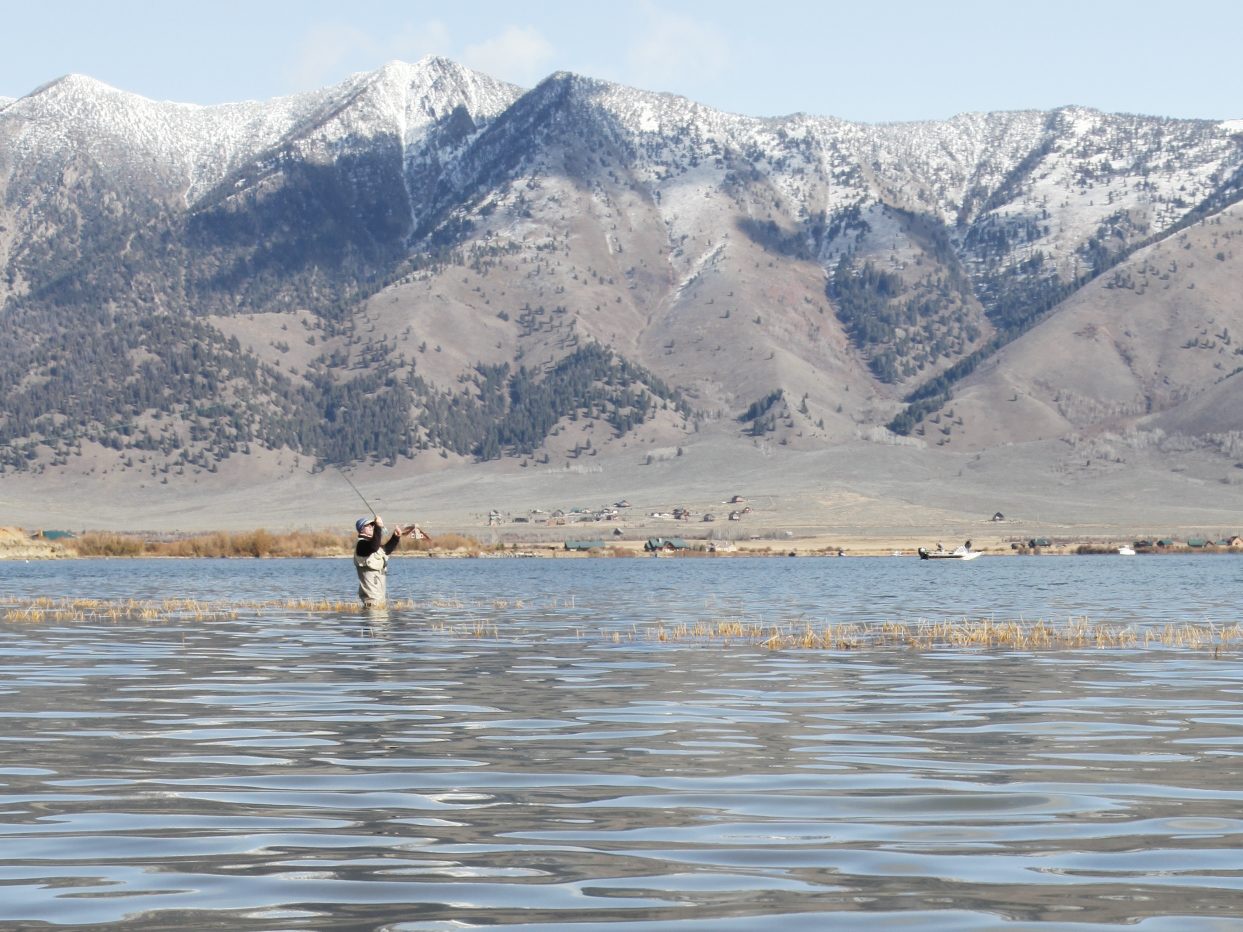
THE OTHER HENRY’S
Mention to any flyfisher that you’re heading for Island Park, Idaho and they’ll immediately think you’ll be packing a selection of CDC and biot creations intended to deceive the wonderfully selective leviathans of the Henry’s Fork.
However, my latest visit to see Rene Harrop and the boys at the TroutHunter, was all about fly fishing the incredible Stillwater’s of the region, and more specifically, Henry’s Lake. The plan was to see how fishing UK flies and techniques would work on the great Cutthroat and Hybrids that inhabit the lake. This wasn’t the first time I fished the lake. I’d visited it ten years earlier, and I remembered enjoying some wonderful sport-fishing from a float tube, fishing damsels through the gaps in the summer weeds. Needless to say, I was fairly confident that some of my own fly patterns and techniques would produce on this trip, and I was excited to hit the water.
Read More »Small Stream Structure- Woody Debris and Other External Features
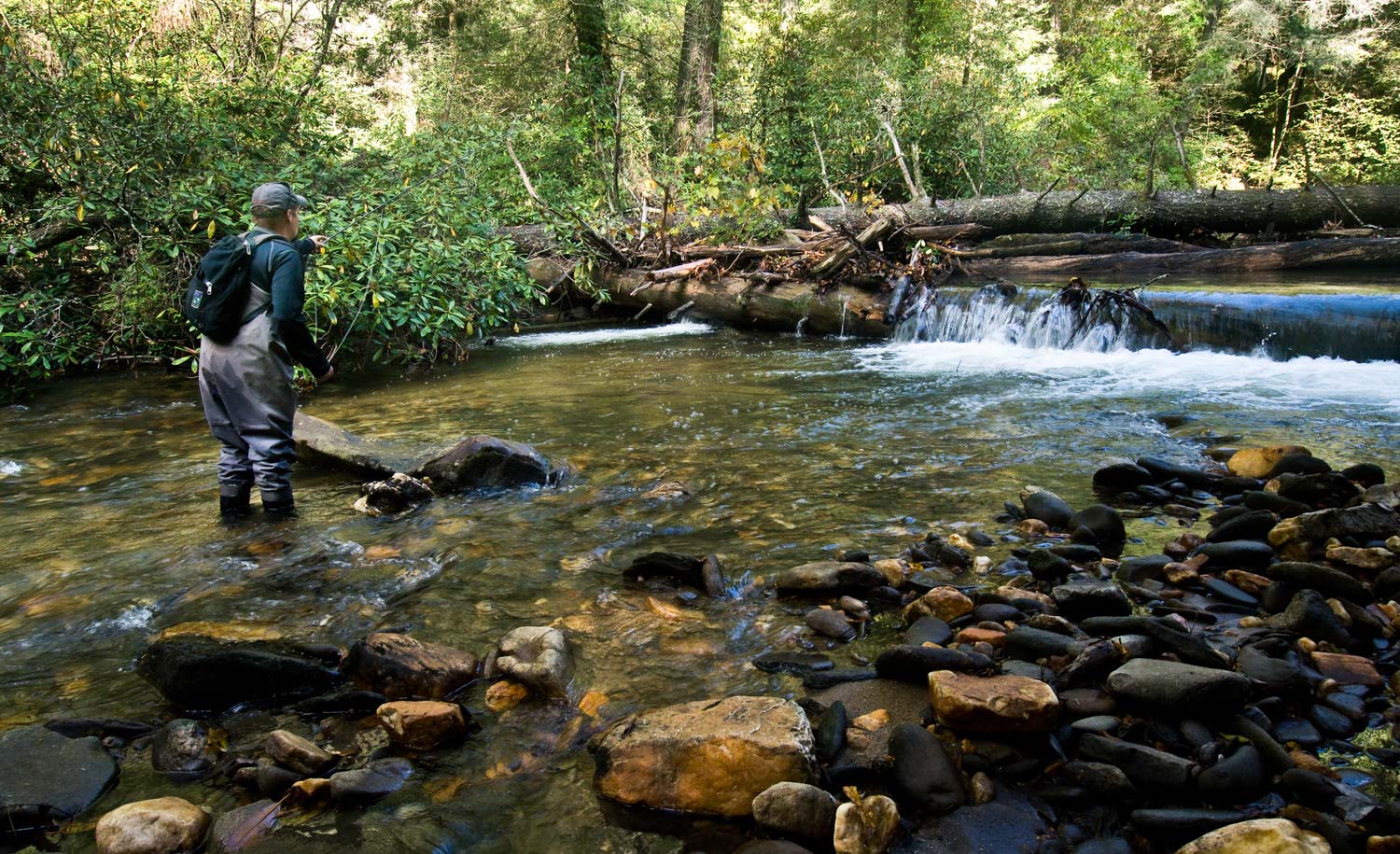
By Jason Tucker
Wood is good!
In the two previous installments I’ve discussed fluvial stream structures (holes, runs etc.) and substrate types. If a stream were a house, then the substrate would be the foundation and floors, fluvial structures would be the walls and rooms, and the woody debris and other structure would be the cabinets and furniture. If that helps. Understanding woody debris, and how it relates to the other features is key to your fishing success. The geography of where you’re fishing greatly affects its importance and utility to the fish. In Appalachian mountain streams a lot of woody debris simply gets swept away or pushed to the margins in slack water; in northern trout streams it is very important.
Woody debris. Trout use woody debris for structure and cover. It also provides homes and food for a lot of aquatic insects and is part of the basis for life in a stream. Don’t underestimate the power of woody debris to create fishing situations. Logs lodge across the currents and create pour-overs. Those pour-overs then create holes. Conversely, logs can lodge higher in the water column, forcing the current down and routing out the bottom. That also funnels food into the spot, a double whammy of food and shelter.
Brush piles and log jams. Brush piles and log jams are trout hotels and provide vital escape cover from predators. As far as fishing goes they are some of the least interesting features in a stream to me. Look for fish to move out from them to feed on hatching insects. You can often tempt hiding fish into striking a streamer around the edges, and look for trout feeding on surface flies right on the leading edge where the current is sweeping insects into the wood. It’s a tricky spot to fish, and even trickier if you hook up. Be ready to put the cork to any fish you hook up on near wood.
Individual logs. Here I’m talking about logs parallel to the current. Trout love these, especially if it’s slightly undercut or has a deeper channel next to it, whether it is fully submerged or breaks the surface. Try to spot submerged logs far enough away without disturbing fish. They’re great places for picking off individual fish. Often current is funneling food to the fish on and below the surface.
Man-made structures. No discussion of wood would be complete without discussing man-made stream improvements built by state agencies and conservation groups. Some of these are dynamite, some are duds. I’ve caught good fish from structures only to return to find the fish quit using them because the water level dropped. On some of the small streams I fish the nature of structures has changed. Instead of building hotels for the fish they’ve switched to placing trees and brush in the current to deepen the channel or change the current direction. Narrow and deep will hold more fish than wide and shallow. Fish will still associate with the structure, so always fish the features of the structure. They vary enough that you’ll have to decipher that. Some days a hopper placed right next to a structure in the current is just the ticket.
Other man-made structures such as docks placed in a stream can likewise be dynamite or duds depending where it is placed in relation to the current, how deep the water is and so on. Landowners tend to place a dock where it is convenient for them to launch watercraft, or provide a good view for quiet meditation. Or drinking. A dock placed in shallow slack water won’t hold much; a dock in the current with good depth can work as a good fish holding structure, either to fish a streamer to, or float a dry fly down the outside edge.
Beaver structure. Beaver dams probably merit a whole chapter on their own. Trout tend to stack up on both sides of a dam. Fish the downstream side as you would any plunge pool/riffle area. Look for the deepest channel coming out of the dam to hold the biggest fish, but don’t ignore smaller chutes. Fish any dark moving water below the dam no matter how small the pocket. The upstream “pool” side of the dam will vary depending on water depth, age of the structure and whether there is structure and food above it. If there’s good current at the dam look for fish
Read More »Western Fly Guide for Eastern Anglers
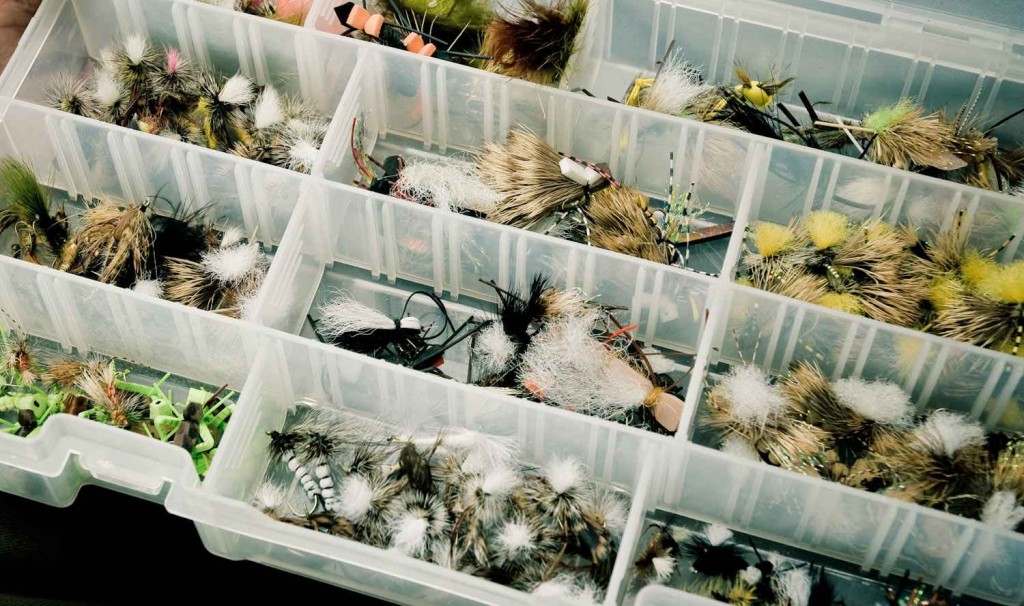
By Kent Klewein
ARE YOU SITTING AT THE VISE DREAMING OF THAT BIG TRIP OUT WEST THIS SUMMER?
I get asked all the time by eastern fly anglers heading out west for the first time, what fly patterns they should stock up on before they leave. What percentage of dry flies to wet flies they should pack, what sizes, and should they pack streamers? The questions go on and on. I get most of the email inquiries from eastern anglers that are fixing to make their summer trip out west during the peak of the terrestrial season. For those that know me, you know that I’m the type of fly fisherman that carries gear for every situation on the water at all times, for the simply fact that I can’t stand being under prepared on the water. Here’s the truth though, if I’m making a trip out west during the terrestrial season, I usually lighten my load significantly and I only carrying the fly patterns that I think I’ll be fishing the most. If I’m going to be making a trip WY, MT, ID or CO I’m going to pack less nymphs, more dry flies and streamers. Colorado is a little more tricky, in which nymphs can play a larger roll than the other western states I mentioned, but if you travel their during the peak terrestrial season, my packing suggestions should work just fine.
Why do I lighten my load this time of year, you ask? Because the trout generally are easy to convince to rise to the surface and take a dry fly this time of year, and when they don’t want to rise to the surface, they almost always will devour a streamer. It’s not rocket science, the fish are optimistically looking up since a large portion of their food is found floating on or close to the surface during the summer months.
Let’s say I’m traveling to Jackson, WY in August, which is probably the most popular requested area out west that I receive questions about. Below are the fly patterns I will stock up on.
Dry Fly Box (Go Big, Many of these patterns suck up real estate)
Read More »The Other Water Haul
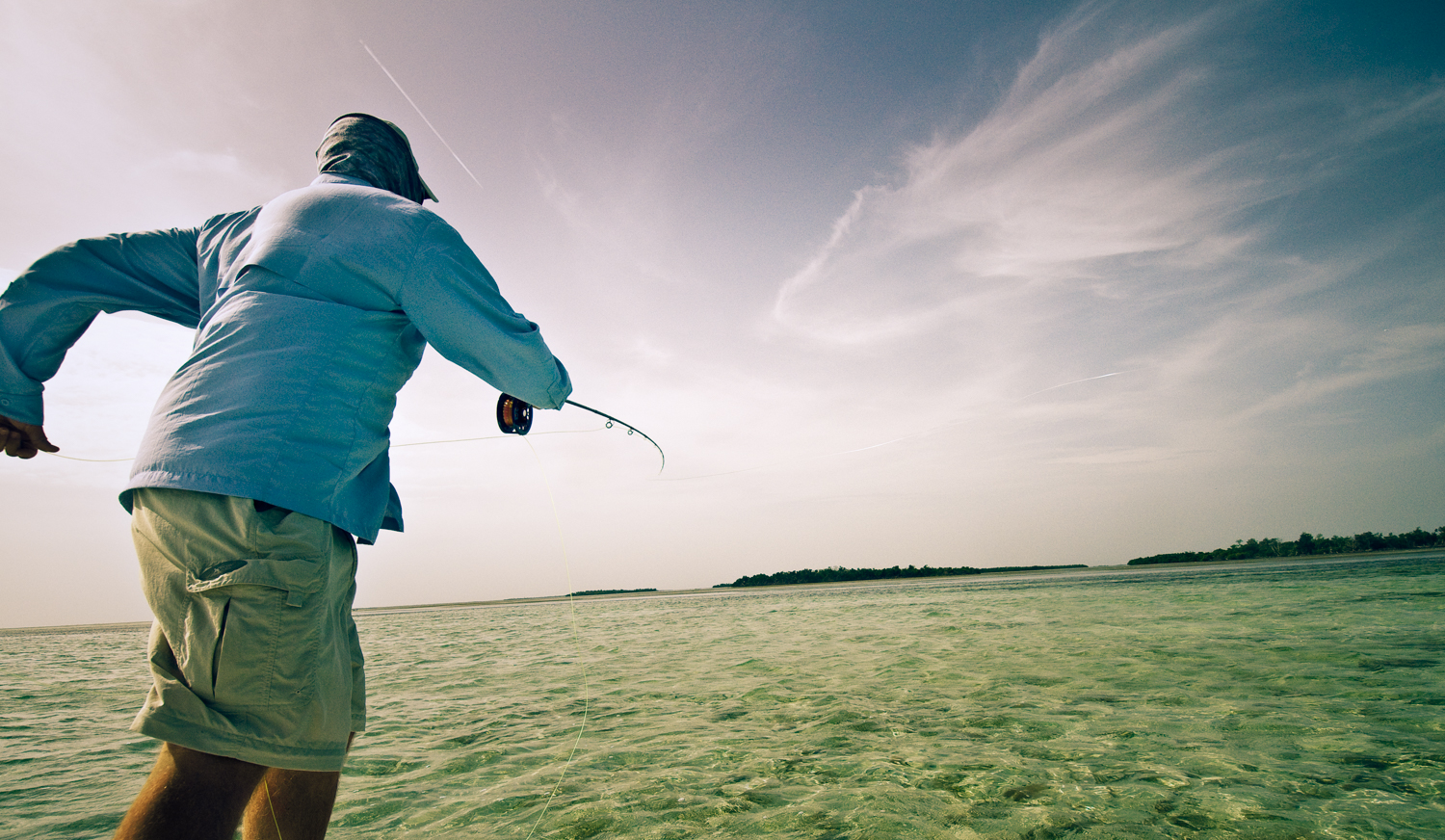
By Louis Cahill
Here’s an unusual, and highly effective, way to use the water haul cast.
Most anglers are familiar with the water haul. If you are not, check out the video and links I have shared below. The basic idea is that you use the surface tension of the water to load your rod for the cast. In stream fishing, this is usually done by letting the current take your fly line downstream until it is tight, then coming forward with your casting stroke. The tension of the line on the water loads the rod and the current serves as a backcast. This is a super effective way to make a stealthy presentation on small streams, but there is another way to use the water haul that’s just as effective on big water.
I most often use this technique in saltwater, but there are times when it’s really handy when fishing rivers or lakes. When the wind is howling off your casting shoulder, it’s tough to make a cast without the fly passing dangerously close to you, or worse, not passing at all. Using a water haul can help.
The problem with wind pushing the fly into the angler is born of slack. Even strong winds don’t have much effect on a fly that is under the tension of an energized line, but when you pause to let your line straighten before the next casting stroke, the wind has its way with your fly and line both. You can minimize the effect by using a Belgian cast. (See video and link below.) That usually works well, at least for a couple of false casts, but when the wind is really moving it’s not enough. It will work on your first backcast, but when you come back for the second, look out.
Read More »South Andros, A Love Story
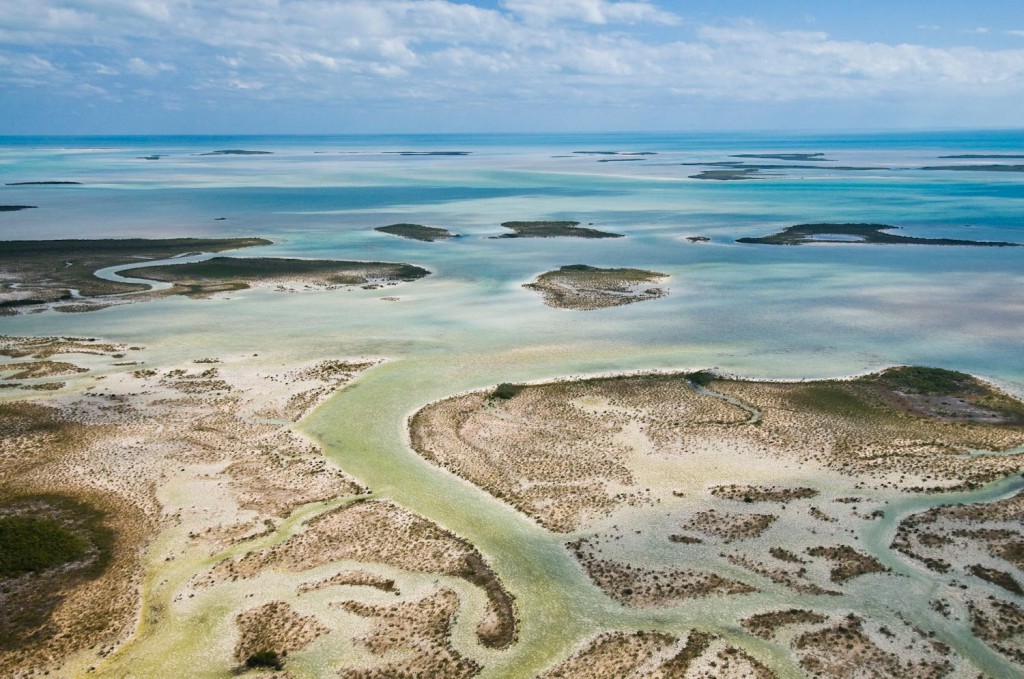
I love the Bahamas. It hits me about this time every year. Just about the time I start pulling out the polar fleece and looking for my fishing gloves I start thinking about Andros. I love the cold weather, it’s not that, it’s just become a rhythm for me. This is the time of year I start thinking about bonefish and gully wash (the coconut milk rum and gin based fire water the locals drink). I start to crave conch salad and that sweet Bahamian bread. I think about warm breezes and cool sand when I should be thinking about migrating brown trout. I start checking over my bonefish gear when I should be prepping my Spey set up. I find myself looking at the weather for Andros when I should be planning my steelhead trips. I think about my friends there at Andros South and the friends I’ve made fishing there who live all over. Some of them even get a phone call. “Hey, what’s up? Done any good fishing lately? Going to the Bahamas this year?”. The other day I even bought a bunch of saltwater tying material. You never know, right? I got some leader material too. Better safe than sorry. It’s almost November and I’m making rum drinks while all my friends are settling into dark winter beers. I imagine they talk about me behind my back like I was a fool hopelessly in love with a girl who doesn’t know he exists. “Wake up dreamer, it’s not gonna happen”. Well, the world needs dreamers. I’m booking my ticket tonight. Try not to hate me. Louis Cahill Gink & Gasoline www.ginkandgasoline.com hookups@ginkandgasoline.com Sign Up For Our Weekly Newsletter!
Read More »Should I start tying my own flies to save money?
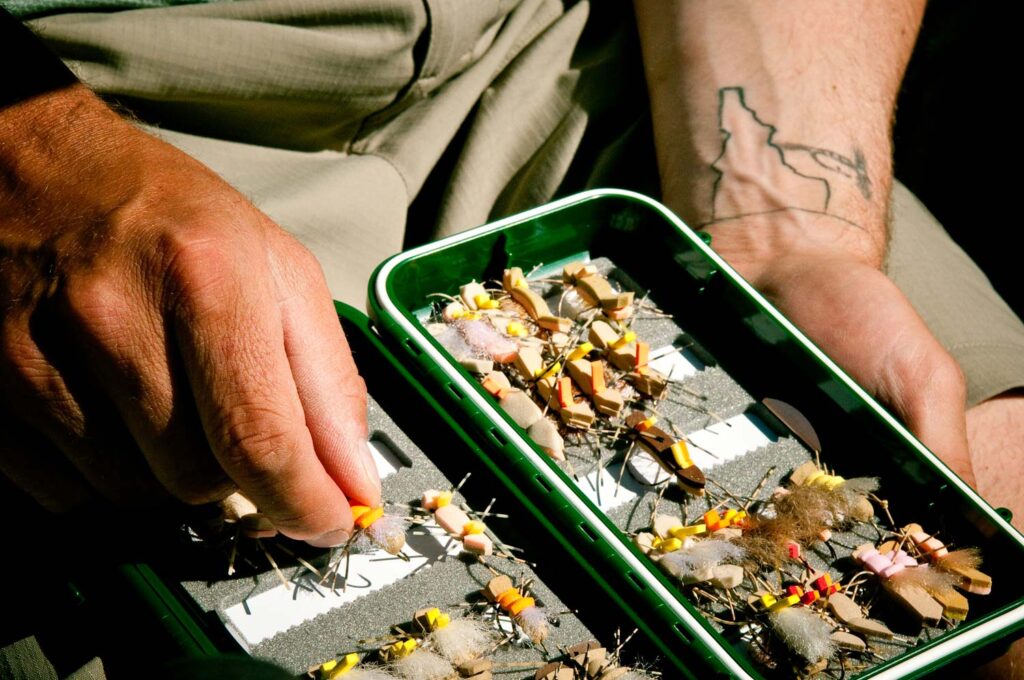
By Jason Tucker This is a question that pops up every week wherever social media may be found and a lot of times the answer you get is “NO!” But it’s not that simple so I’m going to offer you some pros, cons and tips including cautionary nuggets from my own experience. I would encourage most fly anglers to get into fly tying with some caveats. If you’re getting into fly fishing you may have noticed the price of flies- around $2 a pop for even a simple egg pattern, and quickly climbing. Most well-tied dries will run $3-$5 and those beautiful big pike and muskie patterns can run up to $24 a fly, with most trout streamers costing $6-$8. This means a dozen flies can cost you $30-$50 and a bad day on the water can get expensive fast. We’ve all run into that guy on the river with multiple fly boxes stuffed full of beautiful flies he tied himself, handing them out like candy, and when you protest or offer to pay he says what I say- “It costs me almost nothing to tie these.” And he’s right, almost. So right off the bat I’m going to tell you who should not tie their own flies (and why not). If you are a casual fly angler who fishes a dozen times a year and has a good local fly shop, I’d say fly tying is a poor investment. You will probably spend about $400 dollars to start fly tying if you’re doing it right, and if you have good impulse control. You can buy a lot of flies for $400. Other reasons to not get into fly tying- not having a place to do it or to store materials, or having a family or work situation that doesn’t … Continue reading
Read More »Save Your Saltwater Flies
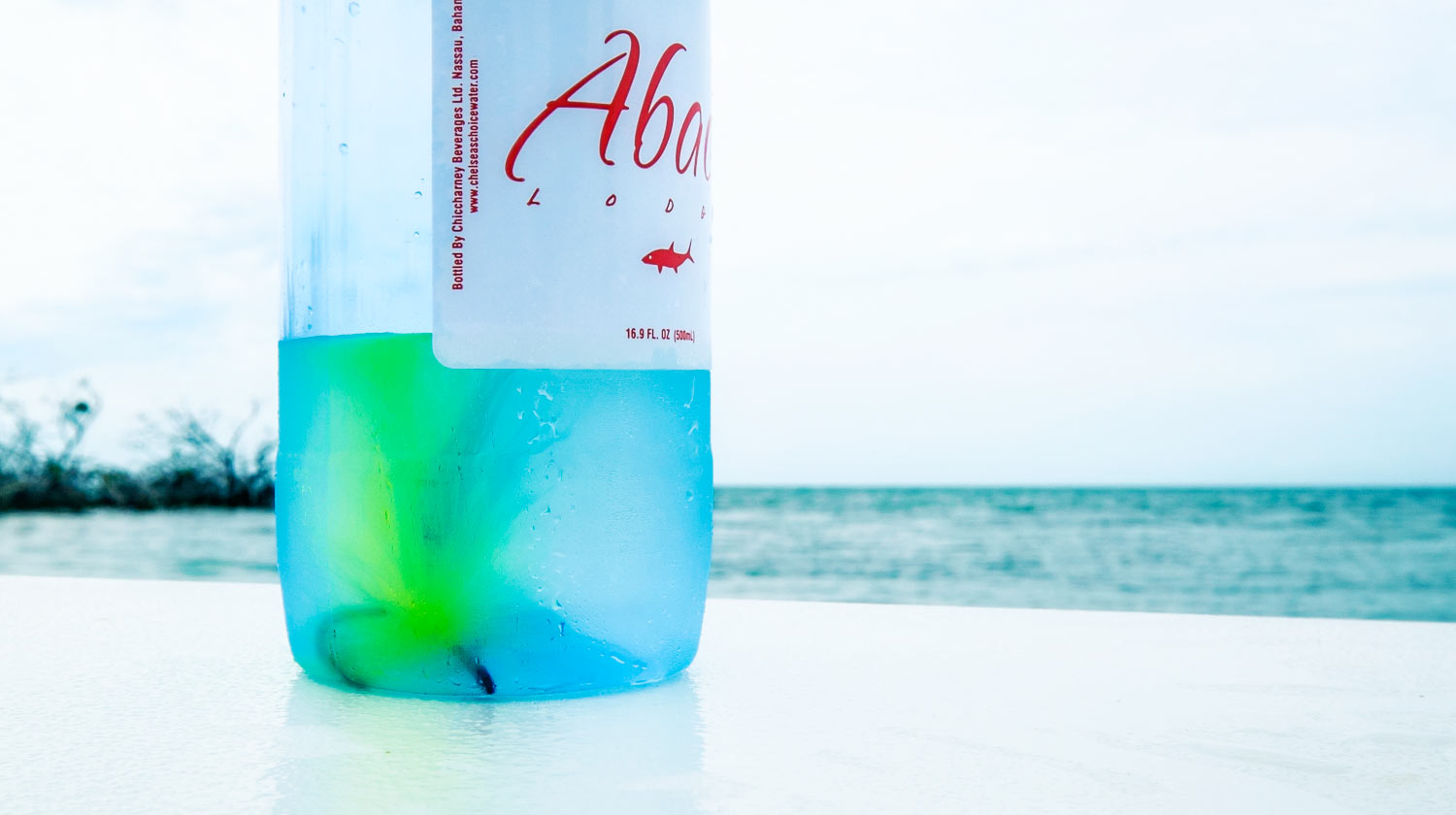
Have you ever put a saltwater fly back in you box while it was still wet from fishing?
If you have, you know the heartache of finding a bunch of your best patterns ruined by the salt you locked in there. It’s no fun. If you’re fishing on your own boat, you probably have a drying patch but if you’re wading or fishing with a guide, it’s hard to find a good place to store your used patterns. They too often end up lost or thrown away. Even if you keep up with them, it’s a pain to wash and dry them later.
I learned a good trick to save those veteran flies from one of the guides at Abaco Lodge. Just drink
Read More »